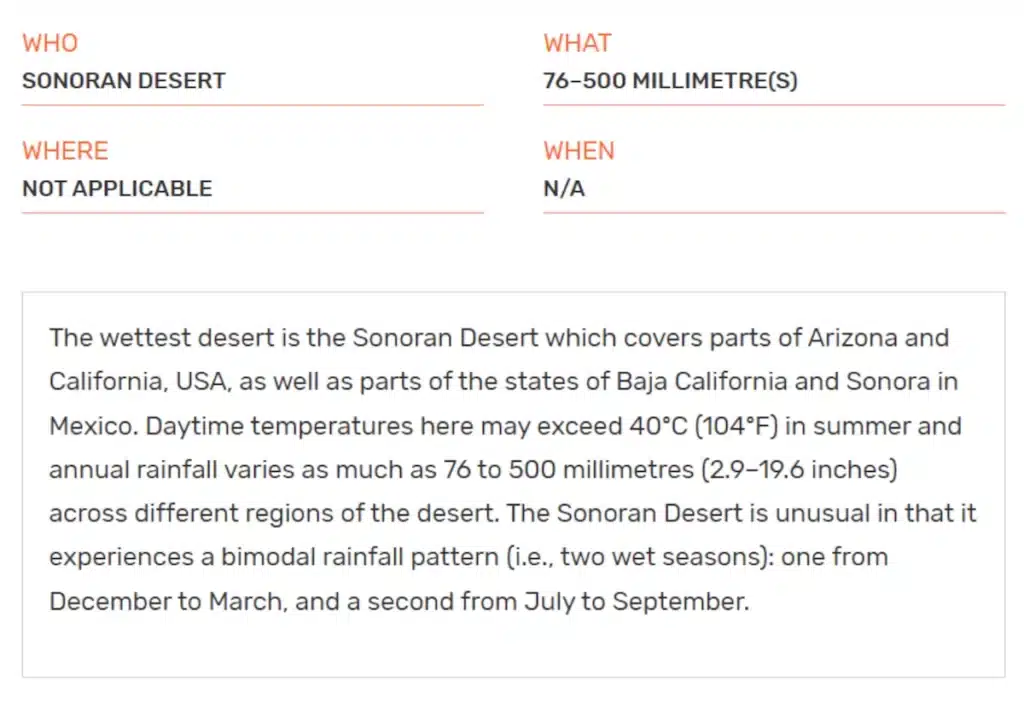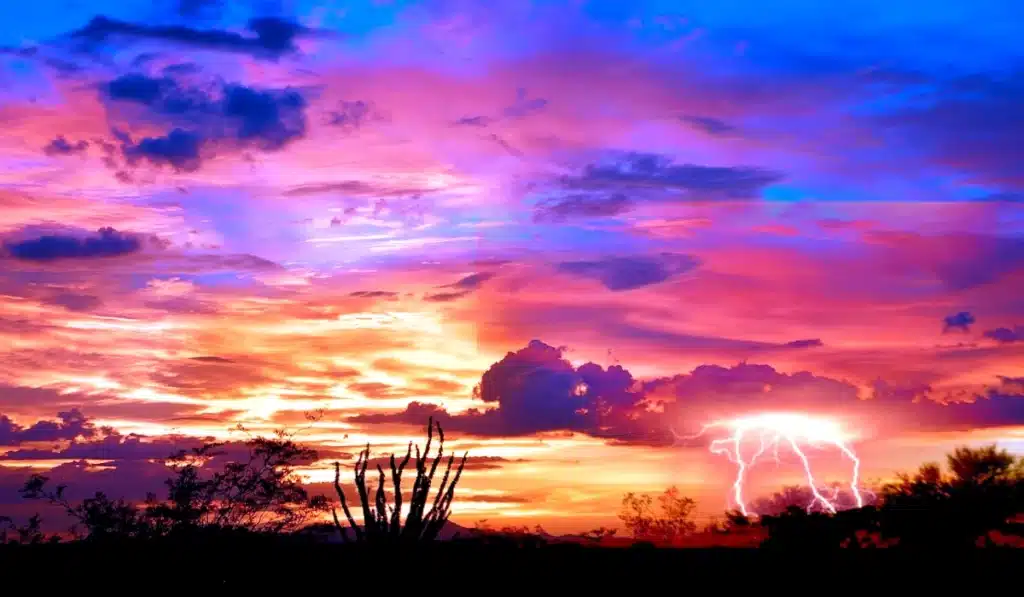When you think of deserts, you probably imagine endless stretches of dry, cracked earth and scorching heat.
But the Sonoran Desert flips that stereotype on its head.
Covering parts of Arizona, California, and Mexico, this desert is officially recognized as the wettest desert in the world.
Yes, you read that right.
Unlike typical deserts that receive minimal rainfall, the Sonoran Desert’s unique climate allows for a surprising amount of moisture, making it a fascinating study in ecological diversity.

Rainfall: More Than You Think
The Sonoran Desert receives between 76 to 500 millimeters (about 3 to 19.6 inches) of rainfall annually, depending on your location within its vast expanse.
This isn’t just a constant drizzle; it features a bimodal rainfall pattern, characterized by two main wet seasons: one from December to March and another from July to September.
During these months, thunderstorms can roll in, delivering heavy downpours that can transform the arid landscape into a vibrant spectacle of life.
Notably, August and September are often the wettest months, while May and June tend to be the driest.
This variability means that a season’s worth of rain can sometimes fall in just one day, creating dramatic shifts in the environment.
Why Is the Sonoran Desert So Wet?
So how does a desert manage to be so wet?
It’s all about geography and climate dynamics.
The Sonoran Desert benefits from moisture-laden air coming from both the Pacific Ocean and the Gulf of California.
In summer, tropical storms can bring significant rainfall as moist air flows inland to fill the vacuum created by rising continental air warmed by the sun.
Additionally, winter storms from the Pacific contribute further moisture during cooler months.
This unique combination creates an environment where life can thrive despite the desert label.
Moreover, surrounding mountain ranges play a crucial role in shaping rainfall patterns through a phenomenon known as the rain shadow effect.
As moist air rises over mountains, it cools and loses moisture before descending into the desert region, leading to increased precipitation in some areas while leaving others dry.
A Biodiversity Hotspot
Thanks to its unusual climate, the Sonoran Desert boasts an impressive array of biodiversity.
It’s home to over 2,000 plant species and more than 550 animal species, making it one of North America’s most biologically diverse deserts.
Iconic plants like the saguaro cactus, which can grow up to 40 feet tall, are just the tip of the iceberg.
Other flora includes various types of cacti, shrubs, and trees that have adapted to both wet and dry conditions.
This rich biodiversity is largely supported by the distinct rainy seasons that allow for different plant and animal life cycles throughout the year.
Where and when to see saguaro cactus blossoms
The saguaro cactus (Carnegiea gigantea) is the superstar of the Sonoran Desert, and when it blooms, it puts on a show you won’t want to miss.
Blooming typically kicks off in late April, with the real magic happening from late May through the first week of June.
During this period, the saguaro bursts forth with stunning white flowers that bloom overnight and close by the next afternoon, creating a striking contrast against its green, spiny arms.
If you want to catch these beautiful blooms in action, your best bet is to head to Saguaro National Park near Tucson, Arizona.
This park boasts thousands of these towering giants, making it one of the best spots to see them in full bloom.
Other fantastic locations include Catalina State Park, Lost Dutchman State Park, and Picacho Peak State Park.
Each of these parks offers scenic trails where you can stroll among the saguaros and soak in the desert beauty.
Plan your visit early in the morning for the best viewing experience—this is when the flowers are still wide open, showcasing their delicate beauty against the breathtaking desert backdrop.
Don’t forget your camera; these blooms are a sight you’ll want to capture!

Climate: Not Your Average Desert
The climate here is classified as a hot desert, with summer temperatures often soaring above 40ºC (104ºF).
Occasionally, temperatures can reach up to 48ºC (118ºF).
However, unlike many other deserts that experience harsh winters with freezing temperatures, the Sonoran Desert enjoys milder winter conditions with minimal frost.
This allows for a unique ecosystem where tropical plants can coexist alongside typical desert flora.
The interplay between high daytime temperatures and cooler evening air creates significant diurnal temperature swings—sometimes exceeding 15ºC (27ºF).
This further influences local ecosystems.
Understanding these climatic nuances is essential for grasping how life thrives in such an environment and how human activities are adapted to these conditions as well.

Kwadjo Mombodo is a self-proclaimed history buff with a passport-sized passion for geography and all things world culture. You’ll often find him diving deep into ancient texts or exploring the nuances of a new language, always eager to uncover the fascinating stories that shape our planet.